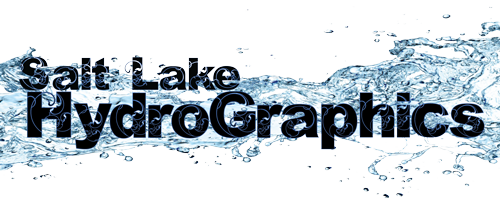About
Hydrographics • Hydrodipping
Water transfer printing, also known as immersion printing, water transfer imaging, hydrodipping, watermarbling, or hydrohraphics, is a method of applying printed designs to three-dimensional surfaces. The resulting combinations may be considered decorative art or applied art. The hydrographic process can be used on metal, plastic, glass, hard woods, and various other materials. Any 3D object that can be submerged into water can be hydrodipped.
The water transfer printing process is extensively used to decorate items that range from entire all-terrain vehicles and car dashboards, to small items like bike helmets or other automotive trim. Films can be applied to all types of substrates including plastic, fiberglass, wood, ceramics, and metal. For the most part, if the item can be dipped in water and usually painted first using traditional techniques, then the hydrographic printing process can be used.

The Process
In the process, the substrate piece to be hydrodipped first goes through the entire painting process: surface preparation, priming, painting, and clear coating. After painting but before clear coating, the part is ready to be hydrodipped.
A polyvinyl alcohol hydrographic film, which has been gravure-printed with the graphic image to be transferred, is carefully placed on the water's surface in the dipping tank. The clear film is water-soluble, and dissolves after applying an activator solution. Once dipping is begun, the surface tension of the water will allow the pattern to curve around any shape. Any remaining residue is then rinsed off thoroughly. The ink adheres to the desired surface and it cannot be washed off easily. It is then allowed to dry.
The adhesion is a result of the chemical components of the activator softening the base coat layer and allowing the ink to form a bond with it. One of the most common causes of a failure to achieve adhesion between the two layers is a poorly applied activator. This can be either too much activator being applied or too little.
